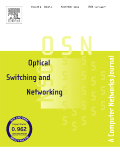
Optical Switching and Networking
Scope & Guideline
Shaping the Next Generation of Networking Research
Introduction
Aims and Scopes
- Optical Network Architecture:
Research on designing and optimizing architectures for optical networks, including software-defined networks (SDN) and elastic optical networks (EON), to improve efficiency and scalability. - Routing and Spectrum Assignment:
Development of algorithms for effective routing, modulation, and spectrum allocation in various optical networking scenarios, including elastic and WDM networks. - Wireless and Hybrid Optical Networks:
Studies on integrating optical technologies with wireless systems, such as LiFi and visible light communications, to enhance connectivity and performance. - Dynamic Resource Management:
Exploration of dynamic bandwidth allocation and resource management strategies to adapt to varying network conditions and user demands. - Security and Resilience in Optical Networks:
Investigations into security measures and resilience strategies for optical networks, addressing vulnerabilities and ensuring robust communication.
Trending and Emerging
- Software-Defined Networking (SDN):
Research focusing on the integration of SDN principles in optical networks is on the rise, emphasizing programmability and dynamic resource allocation to optimize network performance. - Elastic Optical Networks (EON):
There is growing interest in the design and optimization of elastic optical networks, which allow for flexible bandwidth allocation and efficient utilization of spectrum. - Machine Learning and AI Applications:
The application of machine learning and artificial intelligence in routing, resource allocation, and network management is becoming increasingly popular, reflecting the trend towards intelligent networking. - Visible Light Communication (VLC):
Research on visible light communication systems is trending as a complementary technology to traditional optical networks, particularly in indoor and short-range applications. - Resilience and Disaster Recovery Strategies:
Emerging themes include the development of advanced resilience and recovery strategies for optical networks, particularly in response to natural disasters and cyber threats.
Declining or Waning
- Traditional Packet Switching Techniques:
There is a noticeable decrease in research dedicated to traditional packet switching methods, as the field shifts towards more advanced and flexible architectures like elastic optical networks. - Basic Optical Network Management:
Studies centered around basic management techniques for optical networks are becoming less prevalent, as newer approaches leveraging SDN and machine learning techniques gain prominence. - Static Routing Protocols:
Static routing methods are being overshadowed by dynamic and adaptive routing protocols that better address the complexities of modern optical networks. - Single-layer Network Architectures:
Research on single-layer optical network architectures is declining as the focus shifts towards multi-layer and hybrid systems that offer greater flexibility and efficiency. - Conventional Security Models:
Interest in traditional security models is waning in favor of more integrated and comprehensive security solutions that address the unique challenges of modern optical networking.
Similar Journals
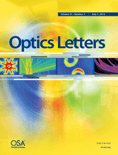
OPTICS LETTERS
Pioneering Innovations in Optical ScienceOPTICS LETTERS is a premier academic journal published by the Optica Publishing Group, dedicated to advancing the field of optics and photonics. Since its inception in 1977, it has maintained a strong reputation for publishing high-impact research, holding a distinguished Q1 category ranking in Atomic and Molecular Physics, as well as Optics, making it a vital resource for researchers and professionals alike. With an impressive Scopus rank of #55 out of 224 in its field, OPTICS LETTERS continues to shape the discourse and innovation in optical science. Authors benefit from its extensive international reach, while readers gain access to cutting-edge studies that address both theoretical and applied aspects of optics. Although the journal currently does not offer open access options, its rigorous peer-review standards ensure that every publication meets the highest academic criteria, making it an essential journal for anyone looking to stay at the forefront of optical research.

Proceedings of the ACM on Measurement and Analysis of Computing Systems
Elevating Standards in Computing Research and AnalysisProceedings of the ACM on Measurement and Analysis of Computing Systems, published by the Association for Computing Machinery, is a pivotal journal in the realms of Computer Science and Engineering, particularly esteemed for its comprehensive focus within the fields of Computer Networks and Communications, Hardware and Architecture, and Safety, Risk, Reliability and Quality. With an impactful presence since its convergence in 2019—and now spanning from 2021 to 2024—this journal upholds rigorous standards, reflected in its classification as Q1 in Computer Science (miscellaneous) and in key safety-related categories. Researchers and professionals will find the journal's emphasis on measurement and analytical solutions critical for advancing computational efficiency and system reliability in real-world applications. The journal does not currently have open access, maintaining its academic rigor and exclusive content that aims to serve the tech-savvy community dedicated to exploring and addressing the challenges within modern computing systems. With Scopus rankings demonstrating a steady impact in the field, particularly recognised within safety and reliability domains, the Proceedings of the ACM stands as an indispensable resource for those seeking to deepen their expertise and contribute to the evolving landscape of computing research.

IEEE Communications Surveys and Tutorials
Empowering Researchers with In-Depth Surveys and InsightsIEEE Communications Surveys and Tutorials is a premier journal published by the IEEE-INST ELECTRICAL ELECTRONICS ENGINEERS INC, renowned for its insightful contributions to the field of communications engineering. Since its inception in 2005, this journal has become an authoritative source of comprehensive surveys and instructional materials addressing current trends and advancements in communication technologies. With an impressive Q1 ranking in Electrical and Electronic Engineering, it ranks first among 797 journals in its category, placing it firmly in the 99th percentile according to Scopus metrics. Researchers, professionals, and students alike benefit from its well-researched articles, making it an essential resource for those seeking to deepen their understanding or stay updated on cutting-edge innovations. Although it does not currently operate as an open-access outlet, the journal's commitment to excellence ensures that each publication is a valuable asset for the academic community.

Computer Optics
Exploring Innovative Frontiers in Optical ComputingComputer Optics is a prominent academic journal dedicated to advancing the field of optics and its integration with computer science, published by the IMAGE PROCESSING SYSTEMS INST of the Russian Academy of Sciences. With an ISSN of 0134-2452 and an E-ISSN of 2412-6179, this journal has been a vital resource for researchers and professionals since it became Open Access in 1987, promoting the free dissemination of knowledge. Based in Samara, Russia, Computer Optics covers a broad range of relevant topics, with its scope spanning atomic and molecular physics, optics, computer vision, and electrical engineering. Although characterized within Q4 and Q3 quartiles in various categories in 2023, its rigorous peer-review process ensures the publication of high-quality research contributions. The journal is crucial for those wishing to explore interdisciplinary approaches that merge practical applications of optics with cutting-edge computer technologies, thereby acting as a bridge between these dynamic fields.
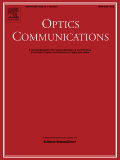
OPTICS COMMUNICATIONS
Fostering Innovation in the World of OpticsOptics Communications, published by Elsevier, is a prestigious international journal that focuses on the dynamically evolving fields of optics and photonics. With its ISSN 0030-4018 and E-ISSN 1873-0310, this journal has made significant contributions to the fields of Atomic and Molecular Physics, Electrical and Electronic Engineering, Electronic, Optical and Magnetic Materials, and Physical and Theoretical Chemistry, consistently ranking in the Q2 quartile across these categories for 2023. The journal, based in the Netherlands, is recognized for its rigorous peer-review process and aims to publish high-quality research articles that advance knowledge and applications in optical communication technologies. Although it operates under a subscription model, the insightful research published here plays an essential role in informing the work of researchers, professionals, and students alike. With a history dating back to 1969 and spanning well into 2025, Optics Communications remains a crucial resource for cutting-edge developments in optics, catering to a global audience dedicated to innovation in this pivotal science.

Advanced Electromagnetics
Navigating the Evolving Landscape of ElectromagneticsAdvanced Electromagnetics, published by ADVANCED ELECTROMAGNETICS, GEEPS-SUPELEC, is an esteemed open access journal dedicated to the rapidly evolving fields of electrical and electronic engineering, as well as materials science, encompassing electronic, optical, and magnetic materials. With an ISSN of 2119-0275 and an established presence since 2012, the journal facilitates the dissemination of high-quality research and advancements, making substantial contributions to the scientific community. Operating from France, the journal proudly holds a Q3 quartile ranking in Electrical and Electronic Engineering for 2023, alongside rankings in Radiation and Electronic Materials. With a commitment to fostering innovation and interdisciplinary collaboration, Advanced Electromagnetics appeals to a broad audience of researchers, professionals, and students, encouraging them to share work that propels the field forward. Enjoy the seamless accessibility of research articles under an Open Access model, allowing for widespread dissemination and engagement with cutting-edge advancements in electromagnetics.
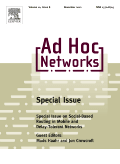
Ad Hoc Networks
Shaping the Landscape of Ad Hoc NetworkingAd Hoc Networks, published by Elsevier, is a leading journal in the fields of Computer Networks and Communications, Hardware and Architecture, and Software, with an impressive Q1 ranking in all three categories as of 2023. With an ISSN of 1570-8705 and an E-ISSN of 1570-8713, this journal offers a robust platform for disseminating cutting-edge research and advancements in network technologies, emphasizing the importance of efficient communication protocols and architectures in contemporary computing environments. Operating from the Netherlands, it has emerged as a pivotal resource for researchers and professionals seeking to explore novel methodologies, frameworks, and applications within the domain of ad hoc and wireless networks. The journal's high impact factor and Scopus rankings—44th in Computer Networks and Communications, 20th in Hardware and Architecture, and 53rd in Software—underscore its relevance and authority in the academic community. Ad Hoc Networks is committed to fostering a deeper understanding of the complexities and innovations in network design, making it an essential read for anyone invested in the future of communication technology.
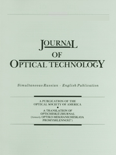
JOURNAL OF OPTICAL TECHNOLOGY
Pioneering Insights in Optical ScienceJOURNAL OF OPTICAL TECHNOLOGY, published by the Optica Publishing Group, serves as a vital resource for researchers and professionals in the fields of optical technology and related disciplines. Established with a commitment to advancing knowledge, this journal spans a broad spectrum of topics, including applied mathematics, atomic and molecular physics, and various engineering disciplines, with a converged publication period from 1995 to 2024. Although it currently holds a Q4 ranking across multiple categories in 2023, it is an important platform for innovative research ideas in a rapidly evolving field. The absence of Open Access may guide readers to explore alternative access options through institutional subscriptions. The journal’s ISSN is 1070-9762 and its E-ISSN is 1091-0786, ensuring accessibility for a global audience. As a publication aimed at fostering scholarly communication, it invites contributions that highlight emerging trends and novel developments in optical technology, catering to a multifaceted audience of researchers, professionals, and students.
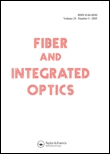
FIBER AND INTEGRATED OPTICS
Exploring the Nexus of Light and TechnologyFIBER AND INTEGRATED OPTICS is a prominent academic journal published by TAYLOR & FRANCIS INC, focusing on the cutting-edge domains of optical and fiber technologies. Since its inception in 1977, the journal has journeyed through expansive developments in the fields of Atomic and Molecular Physics, as well as Electronic, Optical, and Magnetic Materials, boasting a converged publication history extending to 2024. With a solid reputation reflected in its Q3 rankings in both aforementioned categories, FIBER AND INTEGRATED OPTICS serves as an essential platform for researchers, professionals, and students to disseminate and explore innovative findings and methodologies. Although currently not offering Open Access, its scholarly contributions remain invaluable, fostering a deeper understanding and advancements in fiber optic applications and integrated optical systems. Situated in the United Kingdom, the journal continues to attract a diverse global audience, solidifying its significance in contemporary scientific discourse.
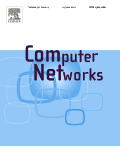
Computer Networks
Shaping Tomorrow's Networking LandscapeComputer Networks, a prestigious journal published by Elsevier, stands at the forefront of the field of computer networking and communications. Established in 1978, this journal has consistently provided a robust platform for the dissemination of high-quality research, currently holding a Q1 ranking in its category as of 2023, specifically within the Computer Science - Computer Networks and Communications sector, placing it in the top 10% of journals in its field (ranked #38 out of 395). With a focus on innovative networking technologies and fundamental theories, Computer Networks showcases original research articles, comprehensive reviews, and significant advancements that drive the academic community and industry practices forward. Although it follows a non-open access model, it remains widely accessible through various academic databases, ensuring that professionals, researchers, and students can engage with its valuable content. The journal's commitment to excellence contributes to its high impact factor, solidifying its role as an essential resource for those aiming to stay at the cutting edge of networking research.